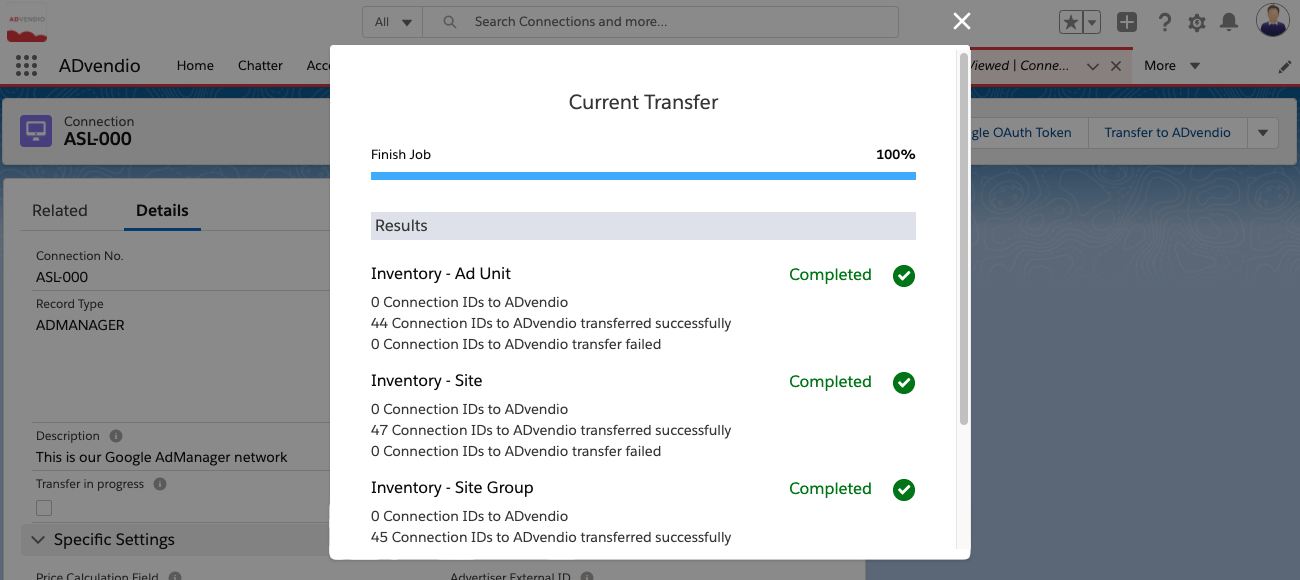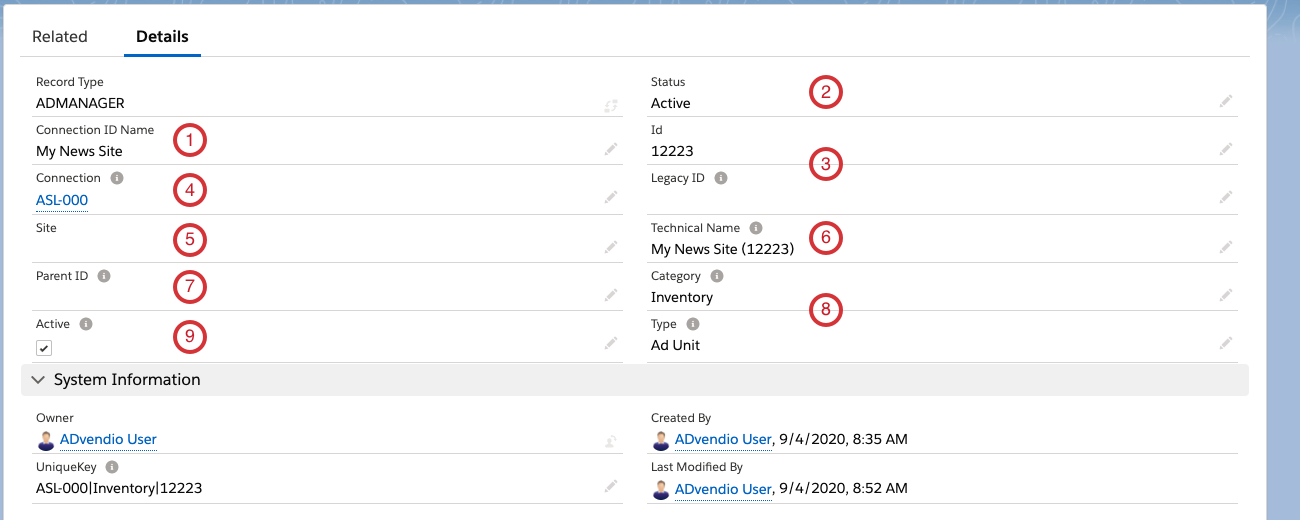Integrations | Google AdManager, Adswizz, Freewheel, Google Display&Video 360, Datorama, SMART, Xandr |
|---|---|
License | Connect |
Roles | Product Manager - Product Manager / Sales Support / Marketing ; System Administrator |
Challenge
In order to configure your connection to external platforms, you will need to synch certain information between the platforms and ADvendio, in order to use features such as targeting on Campaign Items or Audience Segments.
During this process you might ask yourself:
Which of the information are relevant for the integrated platforms like AdServers, DSPs or SSPs?
How are the IDs structured in ADvendio?
For which features are these required?
Solution
The following lists all ids which will be imported into ADvendio by the synch feature. We show the type of import you can select from ADvendio, which IDs will be synched and what they are used for.
Google Ad Manager
Type of Import | Synched Information & IDs | ADvendio Features |
|---|---|---|
Inventory |
| |
Key Value Data / Audience |
| |
Targeting IDs |
| |
Geo / Technical Targeting Data |
| |
Video and Content Bundles |
| Video Items |
Video Positions |
| |
Accounts |
|
Google Display & Video 360
Type of Import | Synched Information & IDs | ADvendio Features |
|---|---|---|
Inventory |
| |
Accounts |
| |
Geo / Technical Targeting Data | Geo Targeting Technical Targeting
| |
Targeting IDs |
|
Freewheel
Type of Import | Synched Information & IDs | ADvendio Features |
|---|---|---|
Inventory |
| |
Video Content |
| |
Accounts |
|
Xandr (AdServer & SSP)
Type of Import | Synched Information & IDs | ADvendio Features |
|---|---|---|
Inventory |
Sites are also referred to as Placement Groups in the Xandr UI | |
Geo / Technical Targeting Data | Device Targeting:
Geo Targeting:
| |
Key Value Data / Audience |
| |
Accounts |
|
Adswizz
Type of Import | Synched Information & IDs | ADvendio Features |
|---|---|---|
Inventory |
| |
Geo / Technical Targeting Data | Device Targeting
Geo Targeting
|
SMART
Type of Import | Synched Information & IDs | ADvendio Features |
|---|---|---|
Inventory |
| |
Geo / Technical Targeting Data | Geo Targeting
Device Targeting |
How are IDs stored within ADvendio?
To store these targeting information, ADvendio uses an object called Connection IDs. Connection IDs are reused in many places, for example to select which part of your inventory you are planning to sell, to select as geo, audience or similar targeting criteria or to help with the breakdown of your delivery reports.
A Connection ID contains the following information:
Connection ID Name: The name of the Audience / Site / ID this will also be shown to your users, when they for example select targeting criteria
Status: The status of this id within the external system (Note: that we import all IDs regardless if they are marked as active or inactive, to ensure our import will miss no relevant information)
ID / Legacy ID: The id used when communicating with the external system, is for example relevant to set targeting criteria to Campaign Items. Some of our integrations still use the legacy ID field, but we’re working on replacing this logic
Connection: To which connection does this ID belong
Site: If a feature requires a direct connection to one of your sites, this can be stored here
Technical Name: sometimes, additional to the user visible display name, there is also a technical name used for the communication with the external system
Parent ID: sometimes the IDs are in a hierarchy (e.g. regions are listen underneath their country ID), this shows the direct parent
Category / Type: Category and type are used to differentiate the kind of IDs and for which features they are relevant
Active: This checkbox can be used to mark an ID as active for ADvendio. If configured in your Administration Settings, your users will only be able to see and select active IDs in the ADvendio features.
Setup
No specific setup needed

